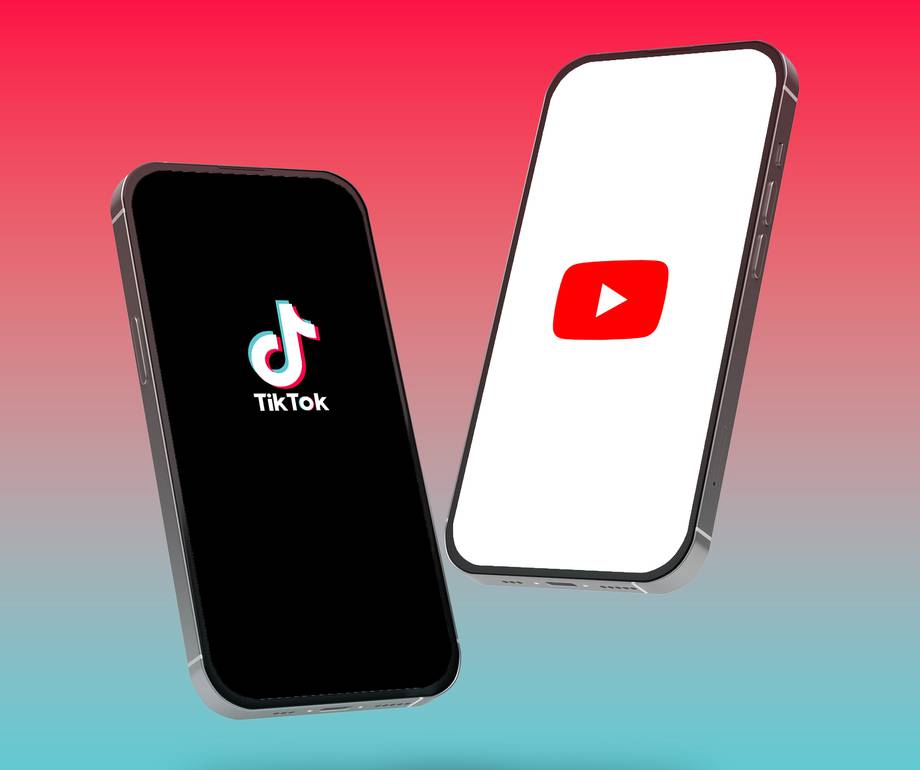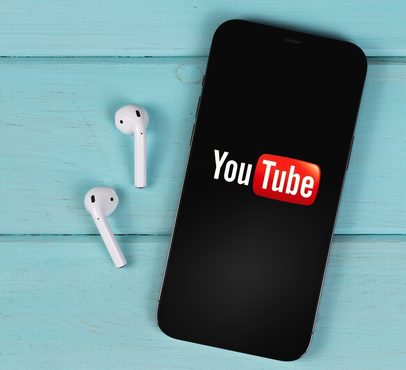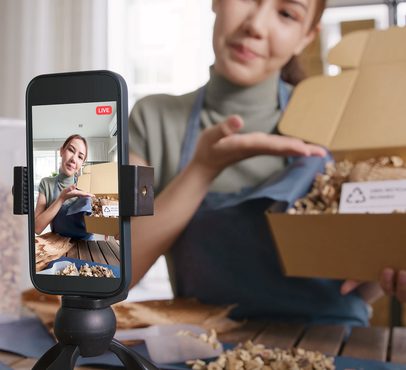With an average of 70 billion views per day (🤯) and a wide demographic user base, YouTube Shorts should be a high priority for any social media marketer, especially those producing snappy, short-form content.
Here’s everything you need to know.
“Shorts is the spot to shoot, share, and binge short videos on YouTube. It’s where you can go to start trends, try out a dance challenge, bring your hilarious ideas to life, and more.”
YouTube Shorts: 5 things to know
YouTube Shorts is essentially a short-form section within YouTube, the ever-popular video sharing platform we’re all familiar with. The aim of Shorts is to rival popular video experiences like TikTok, creating highly-consumable, quick content.
1. Short-form length: When Shorts came out, they were limited to 60 seconds or less — since October 2024, the maximum length is 3 minutes. Anything more and it will become a ‘normal’ YouTube video.
2. Vertical format: YouTube Shorts are viewed on mobile devices in a portrait orientation. This means users don’t have to rotate their screens.
3. Creation tools: Shorts can be created in the YouTube app or you can upload premade videos (hello TikToks & Reels 😏). Shorts provide you with creative tools and features, allowing you to add text, filters, effects and stickers.
4. Getting started: Thankfully, you don’t need to be already posting longer-form content on YouTube to access and post Shorts.
5. Exposure and awareness: Since they’re part of the YouTube ecosystem, which is also part of Google, Shorts have excellent organic reach — possibly even more so than longer-form content. They are also played on a loop; excellent for increased engagement.
YouTube Shorts vs. TikTok vs. Instagram Reels: what’s the difference?
Despite having very similar content formats, YouTube Shorts, TikTok and Instagram Reels do have some subtle differences…
Ownership
YouTube Shorts are owned by Google, TikTok is owned by ByteDance (a Chinese company) and Instagram Reels are owned by Meta.
User base
Whilst all three have a global reach, YouTube is a much more mature platform, having been founded in 2005. This results in Shorts having a broader demographic user base; of its 2.5 billion monthly users, a solid amount are aged over 55. Interestingly, 67% of those 56 and older watch YouTube.
TikTok and Instagram Reels, by comparison, have a younger audience.
Maximum content length
YouTube Shorts can be a maximum of 180 seconds, the same as Instagram Reels. TikToks, however, can be up to 10 minutes long.
Shopping
Shorts, TikTok and Instagram all have built-in shopping features.
Content algorithms and search engine visibility
YouTube Shorts: Users are most likely to encounter Shorts content whilst browsing on YouTube (duh!), but because Shorts is Google-owned, it makes sense to conclude that there’s a higher chance of your Shorts appearing in their search results.
TikTok: The algorithm driving TikTok’s For You Page (FYP) draws out content personalised to users based on watch history, interaction with other content, trends and a range of other factors. TikTok content can also appear in Google search results.
Instagram Reels: These are discovered primarily through the Explore section, taking leads from user activity to present personalised content. When it comes to visibility in Google Search, Instagram Reels are lagging behind — they certainly seem to have less wider discoverability at present.
User engagement
All three allow users to like, comment and share the short-form content on their respective platforms.
TikTok took an early lead when it comes to interactivity — its duets and stitches encourage users to participate and remix other content, making it a somewhat more vibrant and dynamic community in many respects.
In October 2024, YouTube released a number of interesting new features for Shorts designed to boost engagement:
- Content maximum length was increased from 60 seconds to 3 minutes
- A new 'Remix' feature, allowing users to use a template and give content their own spin
- The ability to bring content over into Shorts from YouTube's main repository
- A new Shorts trends page, a place for users to explore popular content.
Monetisation
All three platforms present opportunities for content creators and influencers to bag ad revenue and collaborate with other brands.
More specifically, YouTube Shorts allows for creators to monetise through ad revenue, channel membership and merch integration. TikTok’s Creator Fund enables high-performing creators to earn money based on content performance, whilst Instagram Reels’ main monetisation opportunities lay in brand sponsorships and partnerships.
3 reasons to integrate YouTube Shorts into your TikTok and Instagram Reels strategy
1. Channel diversification and future-proofing
The future of TikTok isn’t necessarily a certain one. It seems there’s a perennial supply of news stories about the platform’s impending ban in numerous countries around the globe — a proposal in the United States to ban TikTok has got a fair bit of support. That’s a big user base potentially getting knocked out.
So whilst TikTok is around right now, there’s no guarantee it’s going to be around in five or so years’ time, or that your audience can access it. YouTube is American owned and has stood the test of time, so expanding into Shorts allows you to futureproof the content you create and build an audience amongst a new channel.
2. Efficiency and content maximisation
This might seem like an obvious one, but if you’ve already got the content created in the right format, why not upload it to another channel?
Now we’re not telling you to re-share every single video, as some won’t be right for the platform — especially if they’re more than 180 seconds (3 minutes) long. But if you’re creating video content with SEO in mind or a trend that’s also popping off on YouTube, it would be a missed opportunity not to share it.
3. Audience expansion
Who doesn’t want to reach new audiences? YouTube has a more diverse user base than TikTok and Reels.
As you don’t need to be posting longer-form content on YouTube to be able to post Shorts, you might not have any audience insights yet — however, once you start posting, some interesting trends about who’s consuming your content might reveal themselves. You might be surprised.
This can also give you ideas and direction for your content strategy. For example, you may find it’s mainly females who engage with you on TikTok, but on YouTube you’re actually reaching more males.
The appetite for short-form content shows no sign of abating — in fact, it’s continuing to accelerate. If you’ve seen success with TikTok and Instagram Reels, getting stuck in with YouTube Shorts will add another element to your social media marketing strategy.
If you’re not sure where to start, our award-winning team of social media experts would be delighted to help.
Need a hand succeeding with Shorts?
Get in touch todayPost by

Extreme's resident Instagram queen, Beth lives and breathes all things social media! After graduating with a degree in Advertising, she explored all aspects of the digital world before firmly finding her feet in the land of social. Day to day, you can find her brainstorming for campaigns, drafting up witty content and strategising to help clients soar on social.
Project
Post by

Since forming Extreme’s social media department back in 2012, our Head of Social Donna and her team’s work has been recognised nationally. With extensive experience spanning mutiple sectors, Donna specialises in social strategy, ideation and paid social advertising.
Project
Post by

From film and television campaigns at Warner Bros to captivating the Cath Kidston community, Lucy has some incredible social media management experience. Away from her desk at Extreme, you’ll likely find Lucy working on her home renovation (that’s if she’s not having a TikTok scroll break in between DIY projects…).
Project



